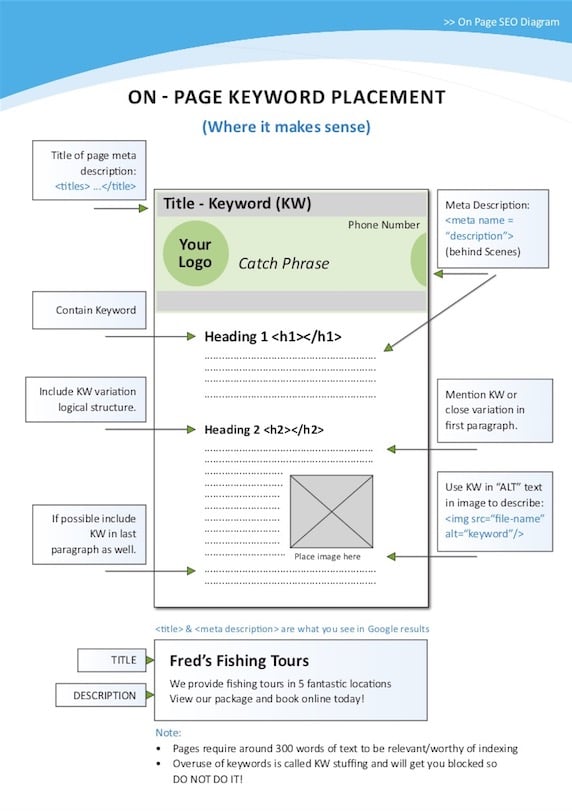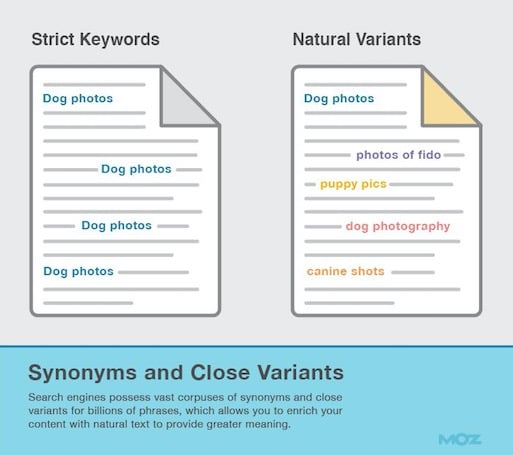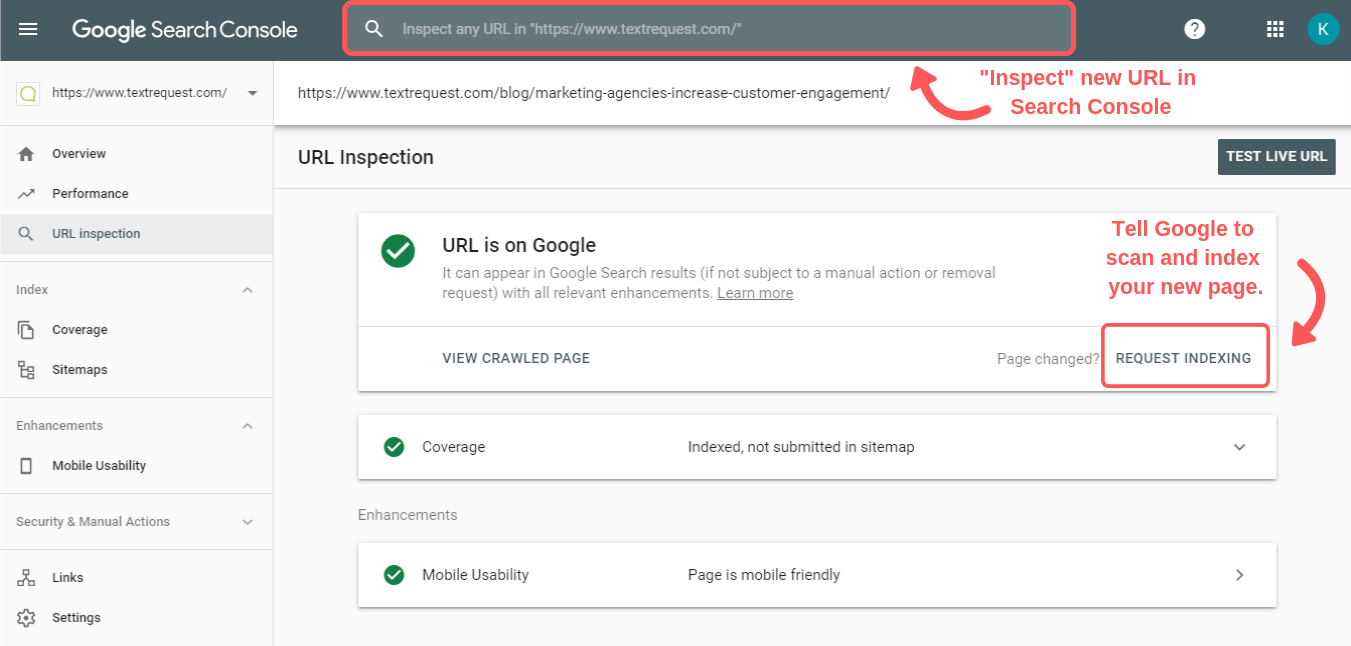Search engine optimization is a mysterious and powerful creature, but you can master it by consistently following a few fundamental concepts. When you apply these concepts to your blog content, you’ll create an SEO juggernaut that brings more organic search traffic to your site.
5 SEO concepts that always work
All search engines have the same goal: to provide good experiences and helpful search results to users. If your blog posts help search engines reach their goal, you’ll bring in more organic traffic.
So how do you do that?
- Make your website easy for search engines to “crawl”
A search engine has to scan your site to analyze what’s on it and where it should rank. The easier your page is to scan, the better your chances of ranking high.
A few tips:
- Your page needs to load quickly (preferably in under 2 seconds)
- Headers, subheaders and meta descriptions need to be properly labeled
- Images need alt text

- Search engines rank what they think is most relevant
Behind every user’s search is an intent. The searcher is trying to get something, whether that be information, products, etc.
You can tell search engines how relevant your page is to that topic and its intent by targeting long-tail keywords, covering these topics in-depth, and using variations of your keyword conversationally throughout your post.

Basically, you need to determine what a searcher’s goal is for your target keywords and create content that helps them achieve that goal.
- Quality wins every time (because search engines rank on a curve)
Posting one top-notch post a month benefits your search results much more than posting five or even 10 mediocre posts a month. Why?
Because your page is directly competing against every other page online that’s targeting the same keyword.
If your page is more relevant and helpful than others on the same topic, it will rank higher. If your page is average by comparison, it doesn’t stand a chance of ranking on the first page. Don’t worry, though, I’m going to show you how to create content that gets on the first page.
- Viewers need to spend a lot of time on your site
Search engines use on-site metrics to determine how positive of an experience your blog posts are providing. Specifically, the faster your page loads and the longer people spend on that page, the better.
If people spend a lot of time on the page, search engines will assume they’re having a positive experience, and will likely send more traffic your way.
- Patience is more than a virtue
It takes time to write high quality and helpful content. It takes time for search engines to crawl and rank your pages. And it takes time for people to search for and find you. That’s why it takes several months (if not closer to a year) to see substantial organic search results from blogging.
So be patient.
Blogging for SEO is like investing in the stock market. It takes a lot of up-front work, but that work is going to provide exponential returns with little effort over time.
Related: How SEO Engages Your Customers Throughout the Conversion Funnel
5 steps to create blog content that brings in tons of organic traffic
Nearly every piece of content I create follows this same five-step formula:
- Ask the same question your target customers are asking
People are searching online because they need an answer to a question. Your job is to provide those answers, so turn their question into your blog’s headline.
For example: If I’m searching for how to add coolant to a home HVAC and you’ve published a piece of content titled “How to Add Coolant to a Home HVAC,” I’ve found a winner. If I’m searching for that topic, it’s obvious to me and to search engines that your page is going to answer my question.
- Tee up the problem and promise to solve it
The average time spent on a blog post is only about 30 seconds, so you’ve got to hook your readers almost instantly. How? State the problem they’re facing, and then promise to solve it. Just be sure to use your target keywords in the process.
For example:
“Your HVAC just isn’t cooling like it should. You’re stuck in a hot home and you’re miserable, but you don’t want to deal with a contractor. Don’t fret! I’m going to show you how to add coolant to your home HVAC unit.”
Yes! Every one of your targeted searchers is experiencing the problem you’ve identified, and you’ve just told them that you can help them solve it. For the next few paragraphs, you’re their new best friend.
- Answer their question in the most helpful way possible
Searchers probably know very little about the topic you’re covering, and it’s your job to educate in order to make the solution seem simple, even if it isn’t.
Keep in mind, different people learn differently, so you want to use different types of content throughout your blog post. For instance, a video showing how to add more coolant to an HVAC would be helpful.
Your video doesn’t need high production value, it just needs to educate effectively. You’ll also want to include a step-by-step list of instructions, and an image or diagram of which parts or tools are needed to get the job done.
In short, you want to provide everything the searcher needs to solve their problem. That’s what is most helpful. And if your SEO fundamentals are set up properly, that blog post is likely going to bring you more organic traffic.
- Break your post into bits and pieces
The best blog posts share a lot of information, but they do so in bite-sized pieces. They use:
- Headers and subheaders
- Bullet points and numbered lists
- Block quotes and bolded text
- Images, charts and graphs
- Videos
- Related links
- And short paragraphs (no more than four sentences)
These features keep viewers interested and scrolling. Not sure how it should look? Just use this post as an example!
Sign Up: Receive the StartupNation newsletter!
- Get your article in front of people
Remember, engagement metrics are an important ranking factor, so you need some initial traffic before you can rank high. How do you get it?
Send an update about your new blog post to everyone who’s opted into communications with you. SMS and email newsletters are great. Share the post with everyone you’ve quoted, referenced, or linked to in it, and ask them to share it with their own audiences.
If you’ve got the budget, sponsor the post on Facebook, Twitter or LinkedIn for a month. And don’t forget to add your new URL to Google Search Console so it will get indexed by Google faster!

Okay, so how do you start seeing SEO results through blogging?
There’s nothing to it but put your new knowledge to work! Pick a topic, like a common question your sales team gets asked all the time, and start crafting content around it. Follow this guide while you create that content and repeat.
It will take time to grow your brand into an SEO juggernaut, and you’ll probably learn a lot along the way. But consistently publish quality content and pay attention to your numbers, and you’ll find yourself sitting at the top of search results before you know it!






